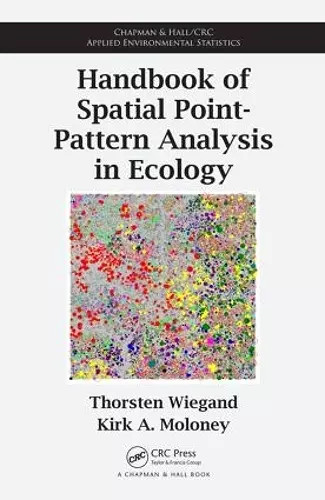Handbook of Spatial Point-Pattern Analysis in Ecology
Thorsten Wiegand author Kirk A Moloney author
Format:Hardback
Publisher:Taylor & Francis Ltd
Published:20th Dec '13
Currently unavailable, and unfortunately no date known when it will be back
This hardback is available in another edition too:
- Paperback£49.99(9780367576233)

Understand How to Analyze and Interpret Information in Ecological Point Patterns
Although numerous statistical methods for analyzing spatial point patterns have been available for several decades, they haven’t been extensively applied in an ecological context. Addressing this gap, Handbook of Spatial Point-Pattern Analysis in Ecology shows how the techniques of point-pattern analysis are useful for tackling ecological problems. Within an ecological framework, the book guides readers through a variety of methods for different data types and aids in the interpretation of the results obtained by point-pattern analysis.
Ideal for empirical ecologists who want to avoid advanced theoretical literature, the book covers statistical techniques for analyzing and interpreting the information contained in ecological patterns. It presents methods used to extract information hidden in spatial point-pattern data that may point to the underlying processes. The authors focus on point processes and null models that have proven their immediate utility for broad ecological applications, such as cluster processes.
Along with the techniques, the handbook provides a comprehensive selection of real-world examples. Most of the examples are analyzed using Programita, a continuously updated software package based on the authors’ many years of teaching and collaborative research in ecological point-pattern analysis. Programita is tailored to meet the needs of real-world applications in ecology. The software and a manual are available online.
"I am pleased to be adding Professors Wiegand and Moloney’s Handbook of Spatial Point-Pattern Analysis in Ecology to [my] collection. Their emphasis on common spatial ecological hypotheses of interest and the data types used to address these research questions are a huge benefit when trying to make a complex topic accessible to practitioners. I recommend this text to those interested in detecting spatial patterns within a dataset constructed as a complete census of objects with corresponding spatial coordinates within a defined temporal window and spatial extent. Alternatively, the book would also be useful for a researcher interested in conducting more confirmatory investigations of hypothesized spatial process(es) that result in specific spatial structures (or patterns) of ecological objects."
—Journal of Agricultural, Biological, and Environmental Statistics, February 2015
"Many useful schematic figures help the nonspecialist reader visualize and reduce the complexity of point process statistics. The accompanying text is clear and detailed and thus facilitates the understanding of important statistical facts. … full of good ideas and offers much advice for practical statisticians and ecologists. … The authors have done a great job in marrying the ecological point of view with point process statistics. The book belongs in the realm of quantitative ecology …"
—Biometrical Journal, 2014
"There is enough detail here for understanding, but not so much that the reader gets buried or lost. … The book is designed to be used with Programita, a free software package specifically designed by the authors to carry out these kinds of analyses. It has been used successfully for teaching and research (amongst others by me), and is regularly updated. … For ecologists wrestling with spatial point-patterns and their analysis, I would happily recommend this book. I would also suggest it as an excellent resource for others dealin
ISBN: 9781420082548
Dimensions: unknown
Weight: 884g
538 pages